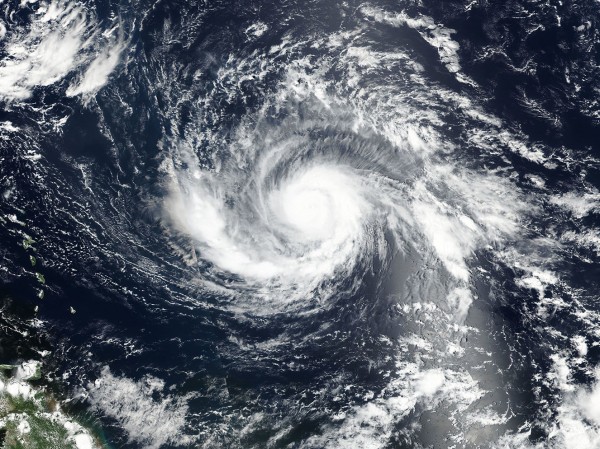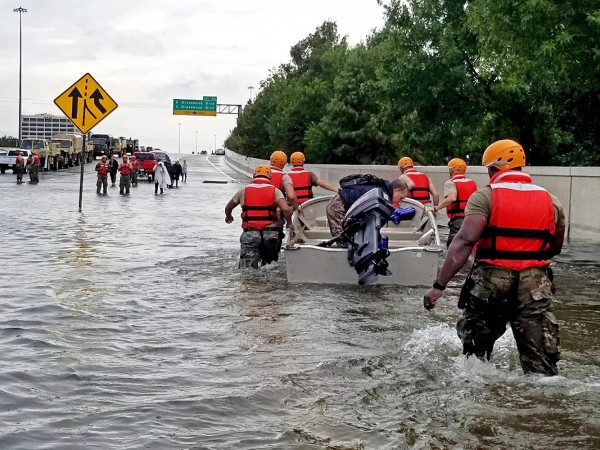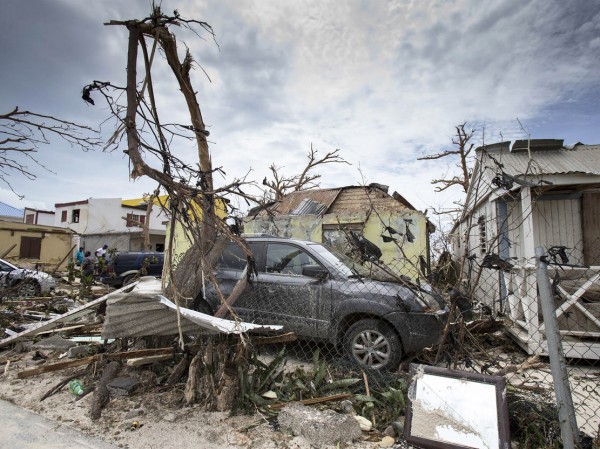 With first Houston, then several Caribbean islands and Florida suffering dreadful flooding and destruction from Hurricanes Harvey and Irma, many are questioning whether more should be spent on flood prevention and reducing greenhouse gas emissions. Economists would normally argue that such questions are answered by conducting a cost–benefit analysis.
With first Houston, then several Caribbean islands and Florida suffering dreadful flooding and destruction from Hurricanes Harvey and Irma, many are questioning whether more should be spent on flood prevention and reducing greenhouse gas emissions. Economists would normally argue that such questions are answered by conducting a cost–benefit analysis.
However, even if the size of the costs and benefits of such policies could be measured, this would not be enough to give the answer. Whether such spending is justified would depend on the social rate of discount. But what the rate should be in cost-benefit analyses is a highly contested issue, especially when the benefits occur a long time in the future.
I you ask the question today, ‘should more have been spent on flood prevention in Houston and Miami?’, the answer would almost certainly be yes, even if the decision had to have been taken many years ago, given the time it takes to plan and construct such defences.  But if you asked people, say, 15 years ago whether such expenditure should be undertaken, many would have said no, given that the protection would be provided quite a long time in the future. Also many people back then would doubt that the defences would be necessary and many would not be planning to live there indefinitely.
But if you asked people, say, 15 years ago whether such expenditure should be undertaken, many would have said no, given that the protection would be provided quite a long time in the future. Also many people back then would doubt that the defences would be necessary and many would not be planning to live there indefinitely.
This is the familiar problem of people valuing costs and benefits in the future less than costs and benefits occurring today. To account for this, costs and benefits in the future are discounted by an annual rate to reduce them to a present value.
But with costs and benefits occurring a long time in the future, especially from measures to reduce carbon emissions, the present value is very sensitive to the rate of discount chosen. But choosing the rate of discount is fraught with difficulties.
Some argue that a social rate of discount should be similar to long-term market rates. But market rates reflect only the current generation’s private preferences. They do not reflect the costs and benefits to future generations. A social rate of discount that did take their interests into account would be much lower and could even be argued to be zero – or negative with a growing population.
Against this, however, has to be set the possibility that future generations will be richer than the current one and will therefore value a dollar (or any other currency) less than today’s generation.
 However, it is also likely, if the trend of recent decades is to continue, that economic growth will be largely confined to the rich and that the poor will be little better off, if at all. And it is the poor who often suffer the most from natural disasters. Just look, for example, at the much higher personal devastation suffered from hurricane Irma by the poor on many Caribbean islands compared with those in comparatively wealthy Florida.
However, it is also likely, if the trend of recent decades is to continue, that economic growth will be largely confined to the rich and that the poor will be little better off, if at all. And it is the poor who often suffer the most from natural disasters. Just look, for example, at the much higher personal devastation suffered from hurricane Irma by the poor on many Caribbean islands compared with those in comparatively wealthy Florida.
A low or zero discount rate would make many environmental projects socially profitable, even though they would not be with a higher rate. The choice of rate is thus crucial to the welfare of future generations who are likely to bear the brunt of climate change.
But just how should the social rate of discount be chosen? The following two articles explore the issue.
Articles
How Much Is the Future Worth? Slate, Will Oremus (1/9/17)
Climate changes the debate: The impact of demographics on long-term discount rates Vox, Eli P Fenichel, Matthew Kotchen and Ethan T Addicott (20/8/17)
Questions
- What is meant by the social rate of discount?
- Why does the choice of a lower rate of social discount imply a more aggressive climate policy?
- How is the distribution of the benefits and costs of measures to reduce carbon emissions between rich and poor relevant in choosing the social rate of discount of such measures?
- How is the distribution of the benefits of such measures between current and future generations relevant in choosing the rate?
- How is uncertainty about the magnitude of the costs and benefits relevant in choosing the rate?
- What is the difference between Stern’s and Nordhaus’ analyses of the choice of social discount rate?
- Explain and discuss the ‘mortality-based approach’ to estimating social discount rates.
- What are the arguments ‘for economists analysing climate change through the lens of minimising risk, rather than maximizing utility’?
 Every year thousands of entrepreneurs will have another great idea that is sure to take off and bring in millions of customers. However, most of these great ideas will turn into another business failure. But, in the case of Dropbox, it is multiple business failures that eventually created a huge success, giving hope to millions of budding entrepreneurs.
Every year thousands of entrepreneurs will have another great idea that is sure to take off and bring in millions of customers. However, most of these great ideas will turn into another business failure. But, in the case of Dropbox, it is multiple business failures that eventually created a huge success, giving hope to millions of budding entrepreneurs.
With 300 million users, the file sharing ‘Dropbox’ is certainly a success, estimated at a value of $10bn. But it didn’t happen immediately and was preceded by a few failures. So, what is the secret to success in this case? The co-founder of Dropbox, Drew Houston, said that it is all about providing something that customers want. In the case of Dropbox, customers are crucial: the more people use it, the easier it becomes for others to use it too, as it allows file sharing on a much larger scale. Perhaps here we have a case of network externalities.
With Dropbox people would tell their friends about it and collaborate. So when you go into work and work on a project with colleagues you recruit them in essence to become Dropbox users because you’re all working on a project together.
No doubt there are many other examples of businesses that have proved a success after several failed attempts. Providing customers with what they want, at the time when they need it is clearly a key ingredient, but so, it appears, is business failure. The following article from BBC News considers the rise of Dropbox.
 Dropbox and the failures behind it BBC News, Richard Taylor (1/7/14)
Dropbox and the failures behind it BBC News, Richard Taylor (1/7/14)
Questions
- Customers are clearly crucial for any business to succeed. How can a new entrepreneur find out if there is a demand?
- Why was timing so important in the case of Dropbox?
- Given that customers can actually use Dropbox for free, how does this company make so much money?
- What are network externalities? Explain them in the context of Dropbox.
- Drew Houston says that ‘distribution’ is another key ingredient to success. What do you think is meant by this and how will it help create success?
 My son Andrew Sloman (see also) is currently in Goa. My wife Alison and I went to visit him over half term – our first trip to India. Goa is a beautiful state, with wonderful beaches, fantastic food and perfect weather in February. But inland from this tourist haven lies an environmental disaster caused by the open-cast extraction of iron ore.
My son Andrew Sloman (see also) is currently in Goa. My wife Alison and I went to visit him over half term – our first trip to India. Goa is a beautiful state, with wonderful beaches, fantastic food and perfect weather in February. But inland from this tourist haven lies an environmental disaster caused by the open-cast extraction of iron ore.
This tiny state by Indian standards produces more than 60% of India’s iron ore exports. Whilst, along with tourism, the iron ore industry has been one of the largest contributors to the Goan economy, its environmental footprint is massive. Deforestation and water and air pollution are just three of the environmental externalities.
So should a cap be placed on the amount of iron ore that is mined? Should the industry be taxed more heavily? Should tough environmental standards be imposed on the industry? Or should it simply be allowed to continue, given its large contribution to the Goan economy? Or, at the other extreme, should the industry be closed? The linked article looks at some of the issues. Try to identify, as an economist, what information you would require in order to come to a conclusion to these questions.
Greens’ shout for cap on iron ore mining falls on deaf ears Times of India, Paul Fernandes (28/2/12)
Questions
- What negative externalities are involved with the Goan iron ore industry? Are there any positive externalities?
- What difficulties are there in measuring the negative externalities?
- How would you set about doing a cost–benefit analysis of (a) expanding the Goan iron ore industry; (b) shutting it?
- Explain the following: “The net present value of the opportunity cost for 25 years at 12% social discount rate of giving it up is greater than its environmental cost by Rs 14,449 crore, the report states.” (A crore is 10 million and Rs is the symbol for an Indian Rupee, where £1 = approximately 78 rupees.)
- What difficulties are there in attempting to take distribution into account when doing a cost–benefit analysis?
In 2008, the UK government set up a National Equality Panel to investigate inequality. “The Panel was asked to investigate the relationships between the distributions of various kinds of economic outcome on the one hand and people’s characteristics and circumstances on the other.” The panel delivered its report, An Anatomy of Economic Inequality in the UK, in January 2010. It “addresses questions such as how far up or down do people from different backgrounds typically come in the distributions of earnings, income or wealth?”
The aspects of inequality examined include: educational outcomes, employment status, wages and other sources of income (such as benefits) both for the individual and the household, and wealth. “In our main report, we present information on the distributions of these outcomes for the population as a whole. Where possible we indicate how they have changed in the last decade or more, and how the UK compares with other industrialised countries. But our main focus is on the position of different social groups within the distributions of each outcome.”
A major influence on people’s income was the income, wealth and class of their parents since these affected education, peer groups and a whole range of other life chances. This made it virtually impossible to achieve equality of opportunity.
The report also looks at policy implications. These include not just the redistribution of incomes, but also the more fundamental issue of how to create equality of opportunity. “The challenge that our report puts down to all political parties is how do you create a level playing field when there are such large differences between the resources that different people have available to them.”
So what has happened to inequality? What explanations can be offered? And what can be done to lessen inequality? The following articles look at the findings of the report and offer their own judgements and analysis.
Rich-poor divide ‘wider than 40 years ago’ BBC News (27/1/10)
The Big Question: Why has the equality gap widened even through the years of plenty? Independent, Sarah Cassidy (28/1/10)
UK is one of world’s most ‘unequal’ societies Irish Times, Mark Hennessy (28/1/10)
Unequal Britain: richest 10% are now 100 times better off than the poorest Guardian, Amelia Gentleman and Hélène Mulholland (27/1/10)
No equality in opportunity Guardian, Phillip Blond and John Milbank (27/1/10)
Has the wealth gap really widened? Guardian, Tom Clark (27/1/10)
Inequality in a meritocracy Financial Times, Christopher Caldwell (29/1/10)
Who wants equality if it means equal poverty? (including video) Times Online, Antonia Senior (29/1/10)
A Major miracle on equality Public Finance, Richard Reeves (29/1/10)
UK one of the worlds most unequal societies; report says The Sikh Times (29/1/10)
Only policies, not posturing, will bring down inequality Independent (28/1/10)
The Report
The full 457-page report can be accessed here.
A 44-page summary of the report can be accessed here.
A 6-page executive summary can be accessed here.
Click here for the charts and tables from the report.
Another good source of information on the distribution of income is the Annual Survey of Hours and Earnings published by the Office for National Statistics.
Questions
- How can we measure inequality?
- Outline the findings of the report.
- Why is inequality so high in the UK and why has it continued to deepen?
- Have tax credits helped to reduce inequality?
- To what extent are greater equality and faster economic growth compatible economic objectives? How are incentives relevant to your answer?
- What specific policies could be adopted to give greater equality of opportunity? Identify the opportunity costs of such policies.
A United Nations report on wealth distribution has found that the world’s richest 1% own 40% of the world’s wealth. Europe, the US and some Asia Pacific countries account for most of the world’s wealthiest with 30% of them living in the US. So is this a problem and should we, or indeed can we, do anything about this. The article below from the Guardian looks at these issues in more detail.
World’s richest 1% own 40% of all wealth, UN report discovers Guardian (6/12/06)
Questions
| 1. |
Examine whether the fact that the richest 10% in the world own 85% of all world assets is likely to cause problems for developing countries. |
| 2. |
Suggest two policies that a developed country could use to narrow wealth distribution and evaluate the likely impact of these policies on the level of economic growth. |
| 3. |
“”In some ways, wealth is more important to people in poorer countries than in richer countries.” Discuss the extent to which this assertion from the article is likely to be true. |
 With first Houston, then several Caribbean islands and Florida suffering dreadful flooding and destruction from Hurricanes Harvey and Irma, many are questioning whether more should be spent on flood prevention and reducing greenhouse gas emissions. Economists would normally argue that such questions are answered by conducting a cost–benefit analysis.
With first Houston, then several Caribbean islands and Florida suffering dreadful flooding and destruction from Hurricanes Harvey and Irma, many are questioning whether more should be spent on flood prevention and reducing greenhouse gas emissions. Economists would normally argue that such questions are answered by conducting a cost–benefit analysis. But if you asked people, say, 15 years ago whether such expenditure should be undertaken, many would have said no, given that the protection would be provided quite a long time in the future. Also many people back then would doubt that the defences would be necessary and many would not be planning to live there indefinitely.
But if you asked people, say, 15 years ago whether such expenditure should be undertaken, many would have said no, given that the protection would be provided quite a long time in the future. Also many people back then would doubt that the defences would be necessary and many would not be planning to live there indefinitely. However, it is also likely, if the trend of recent decades is to continue, that economic growth will be largely confined to the rich and that the poor will be little better off, if at all. And it is the poor who often suffer the most from natural disasters. Just look, for example, at the much higher personal devastation suffered from hurricane Irma by the poor on many Caribbean islands compared with those in comparatively wealthy Florida.
However, it is also likely, if the trend of recent decades is to continue, that economic growth will be largely confined to the rich and that the poor will be little better off, if at all. And it is the poor who often suffer the most from natural disasters. Just look, for example, at the much higher personal devastation suffered from hurricane Irma by the poor on many Caribbean islands compared with those in comparatively wealthy Florida.

